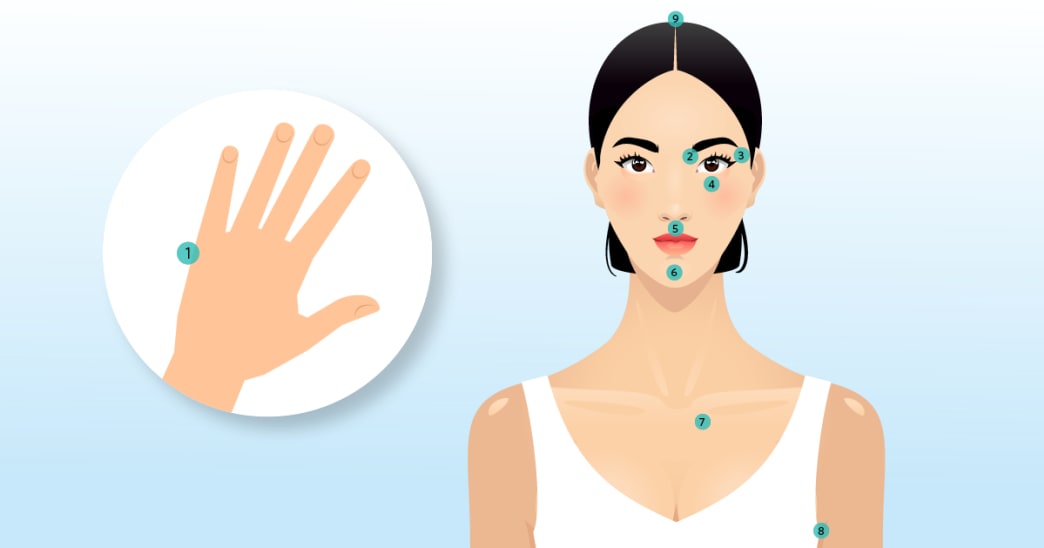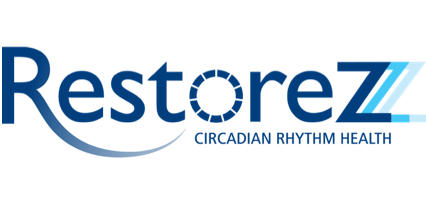
San Diego-based Irina Jordan is the CMO for concussion-assessment technology company ImPACT Applications Inc. Married with three children, she, like other working moms, deals with her share of anxiety. She felt like she was always on a quest for a healthy stress reliever. Last year, she found a fix almost accidentally.
Irina, who is a fan of author Gabrielle Bernstein, was watching one of her YouTube videos when she “noticed her doing this tapping thing when she was talking,” Irina says. “Tapping her head. Tapping her face. I did a Google search and found she had made videos about that tapping. I watched them, did more research, and decided to try tapping on my own.”
Irina found more tapping how-to videos on YouTube and started practicing the technique a few days later. She hasn’t stopped since. She even taught her children—ages 8, 11 and 14—as well as a community of local businesswomen. “I use it whenever I feel triggered. Maybe I just had a meeting with a colleague and now I feel anxious, so I tap to make that anxiety go away,” she says. She also sometimes taps preemptively. “If I anticipate a stressful conference call, I will tap beforehand.”
Working moms experience a drop in their well-being when they feel inadequate and under pressure, according to research published in the Springer Journal of Happiness Studies. That affects how they interact with their children. Add the pressure of working while caregiving during the COVID-19 era— and not having access to the usual stress relievers, such as hitting the gym or going out with friends—tapping might be the mental-health helper you need now.
A Touching Technique
Tapping, otherwise known as emotional-freedom technique for its anxiety-reducing effect, is a self-help strategy that has people literally tapping on their bodies, homing in on specific acupuncture points on the hand, face, head and upper body. As the tapping takes place, it affects a part of the brain called the amygdala, which controls emotions and the fight-or-flight response, according to Donna Bach, N.D., a traditional naturopathic practitioner and tapping expert, who helped run many tapping studies. Because it’s noninvasive, anyone can do it anytime, anywhere (just wash your hands first).
The majority of people who tap these days, like Irina, learn through free videos on YouTube or phone apps. The New York Times bestselling author and tapping expert Jessica Ortner, who created a tapping app in October 2018, says anyone can learn how to do it in a few hours. The process starts by studying the nine acupuncture points to tap and following the onscreen demos. Then, you can add in some positive affirmations and imagery. Experts suggest saying out loud what you’re hoping to accomplish as you tap each point, such as ditching a bad feeling or achieving a specific goal.
“You can repeat the word or phrase silently. But people who say it out loud tend to stay focused better since their mind doesn’t wander as much,” Dr. Bach says.
“Gently tap seven to 10 times per point using two or three fingers—the same way you might impatiently tap on a table,” Ortner says. “If both hands are free, you can tap with both hands, but if not, one works as well.”
Move through all nine points to complete a round. Experts suggest doing two or three rounds when you’re feeling anxious or upset, spending a few minutes on each round. One round is enough to boost relaxation and create change inside your body, though, Dr. Bach says.
“But if you’re still feeling any fear, pain or anxiety, you can do the whole round over and over again,” she says.
Proving the Point
Tapping has been around only since 1995, when it was first introduced by Gary Craig, a Stanford University engineer, but it’s based on an ancient science—the Chinese meridian system. Tapping and acupuncture practitioners alike believe that we have internal energy called “qi,” which flows through our meridian points. By manipulating those points, practitioners can move and direct the energy that flows through it, calming the mind and body.
Much like acupuncture, there’s plenty of research behind tapping. For example, one of about 100 tapping studies investigated if tapping could affect levels of the stress hormone cortisol. In that study, test subjects were split into three groups: Some people tapped, some did talk therapy with a pro, and the rest relaxed alone in a quiet setting.
“It was a triple-blind study looking at biological markers,” explains Dawson Church, Ph.D., a lead on the study, who is also the CEO of Energy Psychology Group Inc.
“We saw anxiety and depression symptoms drop right away [in the tapping group], but the more impressive thing was that cortisol levels dropped dramatically after just one hourlong session. If you tell me that a patient feels less depressed or anxious that’s great, but if you tell me that patient’s actual biology changes, that makes me sit up and take notice,” Dr. Church says. He’s run dozens of other clinical trials.
Adds Dr. Bach: “When we did our research, we took saliva samples, and we saw lowered cortisol levels and an increase of immunoglobulins, which increases the immune system, reduces heart rate and decreases blood pressure.”
Other studies have linked tapping to reduced food cravings, improved post-traumatic stress disorder, reduced pain and fear during childbirth, improved sports performance, and eliminated dental-work anxiety.
Finding Peace with Tapping
Speech pathologist Maryann Sucich-Massari, from Glen Head, New York, started tapping to deal with a work problem that was keeping her up at night. She read about tapping on hayhouse.com, a website with courses and educational offerings.
“It was 3 a.m., and I couldn’t sleep. I found this video and started tapping, and immediately felt calm.” She didn’t want to learn tapping by herself, so she found a practitioner online. Maryann paid $625 for six phone sessions for that pro to talk her through tapping, giving her scripts to use, and uncovering the big issues she needed to work on.
“Tapping turned everything in my head way down,” Maryann says. She now taps on her own as an antidote to the stress that comes along with a busy schedule, working with children with autism, and taking care of her own family. “There’s a lot of paperwork, and I get lonely since I’m one-on-one with children all day,” Maryann says. “I tap and focus on my emotions and the outcomes I want.”
Ortner, who was a tapper before she was a tapping entrepreneur, says working parents such as Maryann can use tapping at home and in the office—even while in the middle of a meeting. “If you’re with people and you’re feeling stress, you can hold your hand and tap discreetly so no one notices,” she says. Dr. Church notes that situational tapping—before giving a speech, during a tough commute, or while trying to wrangle kids—is actually the perfect time to tap.
Irina says she’s comfortable tapping anywhere, including at the office, and is happy if someone asks her what she’s doing; she likes explaining what tapping is and how it works. “I don’t do woo-woo stuff, and this isn’t woo-woo,” she says.
This “woo-woo” factor is one of the things that can hold people back from trying the technique, Dr. Church says. “The largest misconception people have about energy therapies is that they aren’t visible, so they can’t possibly be effective. It’s hard for humans to accept that energy can change anything. However, we scientists see that it’s changing gene expression, it’s changing biology, it’s changing blood-chemical levels. It’s not mystical or impossible. It’s happening.”
The Tapping Points

By tapping on the nine points in order, you complete one round of the anxiety-reducing practice.
There are nine tapping points, including the sides of the hands right below the pinkie, as well as spots on the face and upper body. Once you "activate" the starting point under the pinkie, you move around as follows:
Point 1: The “karate-chop point,” right below the pinkie fingers.
Point 2: At the beginning of your eyebrows, nearest to the nose, right where the hair starts.
Point 3: Outer end of the eyebrows, right on the bone.
Point 4: On the bone right below the eye, where your pupils would be if they were lower and you were looking straight ahead.
Point 5: Below the nostrils in the philtrum, the small groove above your upper lip.
Point 6: About midway between the lowest point of your bottom lip and your chin.
Point 7: Middle of the collarbone.
Point 8: Under the arm, right above where your bra ends.
Point 9: At the top of the head.
Written by Karen J. Bannan for Working Mother and legally licensed through the Matcha publisher network. Please direct all licensing questions to legal@getmatcha.com.


